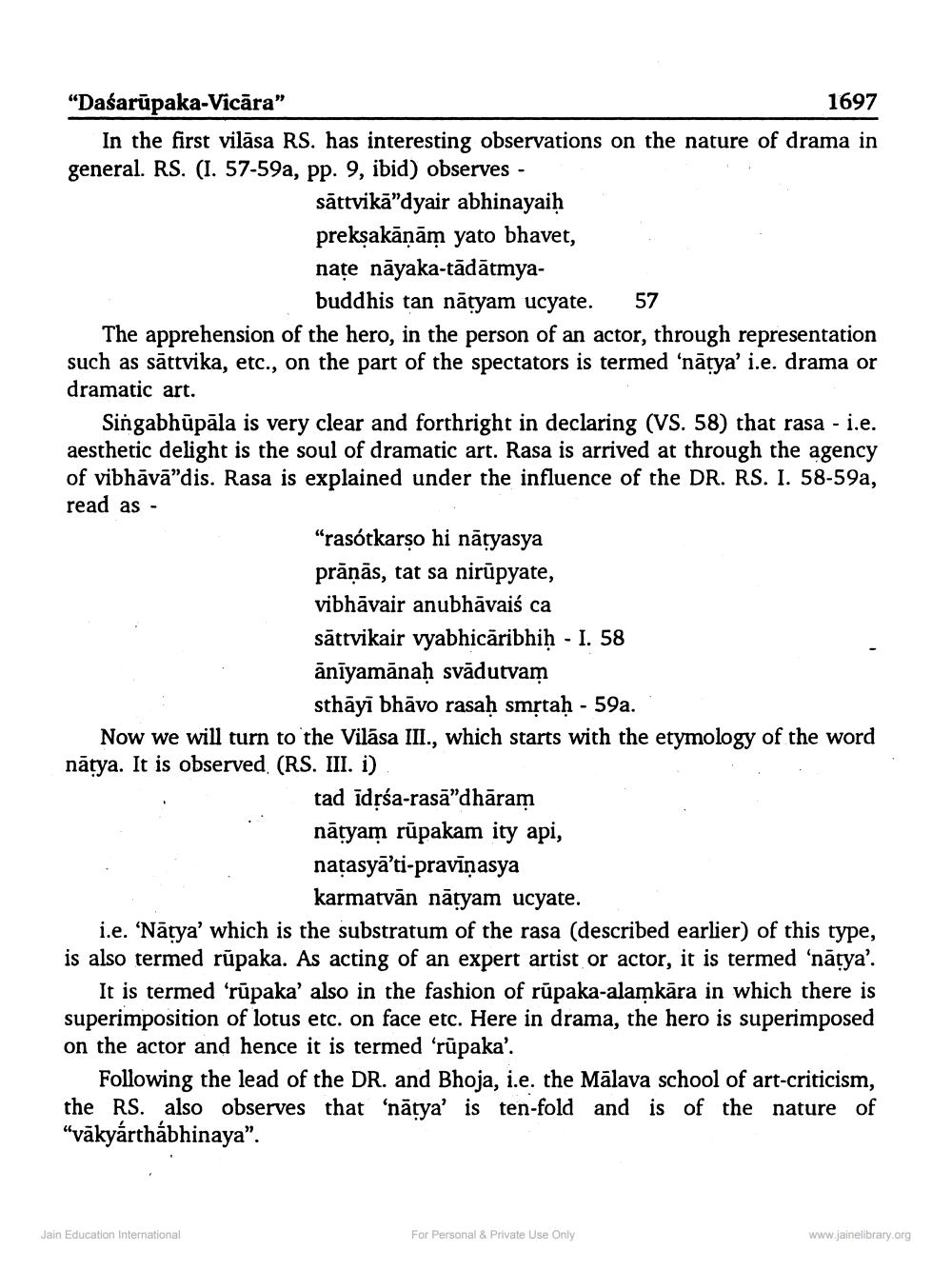________________
"Dasarūpaka-Vicāra"
1697 In the first vilāsa RS. has interesting observations on the nature of drama in general. RS. (I. 57-59a, pp. 9, ibid) observes -
sāttvikā"dyair abhinayaiḥ preksakāņām yato bhavet, nate nāyaka-tādātmya
buddhis tan nātyam ucyate. 57 The apprehension of the hero, in the person of an actor, through representation such as sāttvika, etc., on the part of the spectators is termed 'nātya' i.e. drama or dramatic art.
Singabhūpāla is very clear and forthright in declaring (VS. 58) that rasa - i.e. aesthetic delight is the soul of dramatic art. Rasa is arrived at through the agency of vibhāvā”dis. Rasa is explained under the influence of the DR. RS. I. 58-59a, read as -
"rasótkarso hi nāryasya prāņās, tat sa nirūpyate, vibhāvair anubhāvais ca sāttvikair vyabhicāribhiḥ - I. 58 ānīyamānaḥ svādutvam
sthāyi bhāvo rasah smrtaḥ - 59a. Now we will turn to the Vilāsa III., which starts with the etymology of the word nātya. It is observed (RS. III. i)
tad idịśa-rasā”dhāram nātyam rūpakam ity api, natasyā’ti-pravīņasya
karmatvān nātyam ucyate. i.e. “Nātya' which is the substratum of the rasa (described earlier) of this type, is also termed rūpaka. As acting of an expert artist or actor, it is termed 'nāțya'.
It is termed 'rūpaka’ also in the fashion of rūpaka-alamkāra in which there is superimposition of lotus etc. on face etc. Here in drama, the hero is superimposed on the actor and hence it is termed 'rūpaka'.
Following the lead of the DR. and Bhoja, i.e. the Mālava school of art-criticism, the RS. also observes that 'nātya' is ten-fold and is of the nature of "vākyárthábhinaya".
Jain Education International
For Personal & Private Use Only
www.jainelibrary.org




